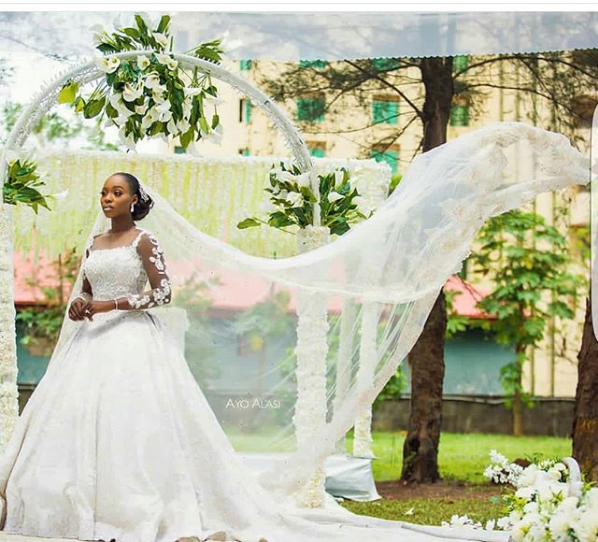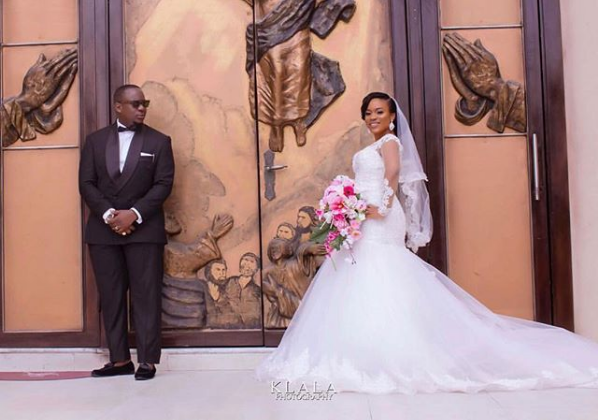
- Cathedral Veil
This is generally known as the mother of all wedding veils. This veil gives you this regal look mixed with a bit of formality.
As the name implies, cathedral wedding veils are specially designed to be worn in a cathedral style church or a grand setting event where the aisle is long and wide to accommodate the wedding dress and veil for them to be in full display.
Photo Credit: Instagram
A wedding veil is one of the most critical bridal look accessories. It completes the bridal look and gives the bride a beautiful and majestic look.
Historically, a wedding veil was seen as a means of protection, i.e. to protect the bride from evil spirits. But, over time, it has evolved, and wedding veils are considered as a beautiful form of adornment.
There are different types of veils the brides can choose from; however, it is imperative that brides understand that a veil is an accessory, and it should complement your entire bridal outfit.
Therefore, it is important you read further to discover the 10 different wedding veils and how to choose the best wedding veil for your dress.

- MANTILLA
It is loose in shape and wrapped over the bride’s head and shoulders like a scarf.
This veil is worn without a headpiece and is usually edged in lace.
Photo Credit: @michigabbi

- Elbow Veil
Elbow veils have one or two layers and are designed to fall around your elbows.
These veils are great for dresses longer than knee length.
Photo Credit: @ijohnsekyere

- Blusher veil
A blusher veil is a standard wedding accessory. It is quite short in length size and it only has one layer of fabric.
Blusher veil falls just underneath the chin and is used to cover the bride’s face before the ceremony begins. It highly versatile and this explains why it can be worn in any type of dress.
Photo Credit: @michigabbi

- Chapel Veil
Chapel veils are the very formal type of veils and it is a good alternative for a formal, floor-length gown.
Chapel veil has two layer of materials. The first layer is long and it meant to cover the bride’s face during the ceremony. The second layer goes all the way to the floor and it is stays on the back of the bride’s head.
Photo Credit: @houseofpaigeashley

- Fingertip Veil
This is just the perfect length for a bride who wants a longer veil that yet not dramatic.
It is best for floor length, formal gown.
Photo Credit: @michigabbi

- Waltz Veil
This is also a formal veil. However, it varies in length. The shortest length goes to the bride’s knees and the longest goes to the floor.
There is only one layer of material inside this veil.
Photo Credit: @HBpixel

- Bouffant
This type of veil was popular in the 1950’s.
Photo Credit: @EmmanuelOyeleke
Before choosing a veil, here are some factors to consider:
-
The type of your dress.
Ensure the veil complements your wedding dress. You should ensure the veil does not overshadow the beauty of the dress. They should both come out beautiful. Also, if you have a very detailed and overly decorated gown, it is best you go for a simple veil. -
Consider the length of the veil.
The length of the veil should look appropriate for the gown. The color of the veil is also an important factor. You should also put that into consideration. -
Your hairstyle is also an important factor.
This is because some veils look best in some certain type of hairstyle. Consult your bridal stylist to assist you in making the right decision. -
Consider the shape of your face.
Ensure the veil complements the shape of your face. - Material of the veil
Some are sheer, opaque or delicate. Be sure the material works for you and for your dress.
We hope you find these tips useful, if you do, kindly drop a comment below.
